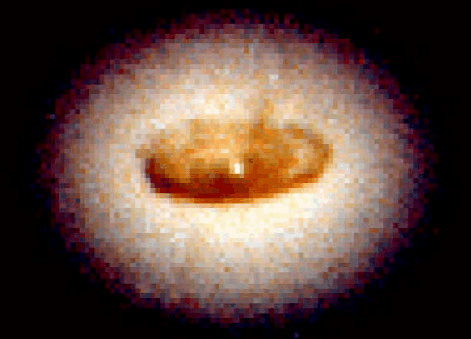Active Galactic Nuclei -- Accretion Disks

Hubble Space Telescope image of what may be gas accreting onto a blackhole in the elliptical galaxy NGC 4261
Source: Astronomy Picture of the Day Archive
When matter falls towards a blackhole, it is speculated that it will form a disk,
known as an accretion disk.
A disk forms primarily because of conservation of angular momentum --
the gas in the disk is orbiting the nucleus.
In a similar fashion gas accreting onto a new-born star can form a disk that may eventually form planets such as in our solar system.
Astronomers observe accretions disks in AGN mainly in two ways.
Accretion disks may be directly emitting ultraviolet light (because their temperatures
are around 100000 K) and the disk may be reflecting X-rays
coming from hot gas above the disk.
Because ultraviolet light is hard to observe, the X-ray reflection,
known as Compton reflection, and a strong iron line produced
by fluorescence of the reflecting X-rays, may be the best evidence for accretions disks.
Return to AGN page

